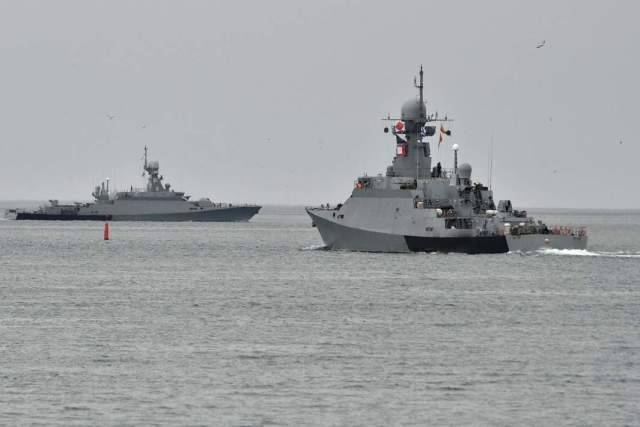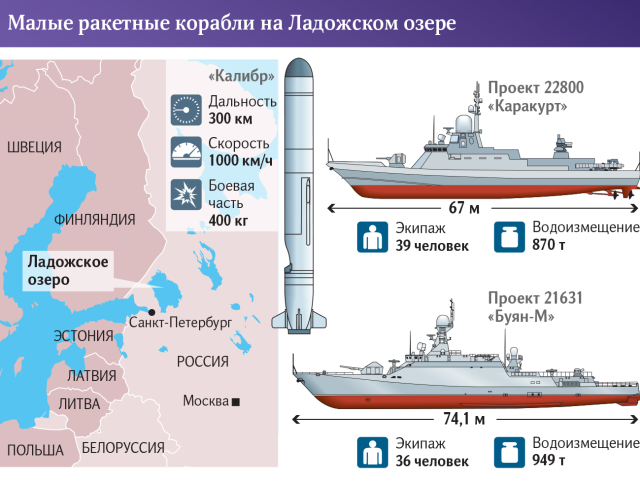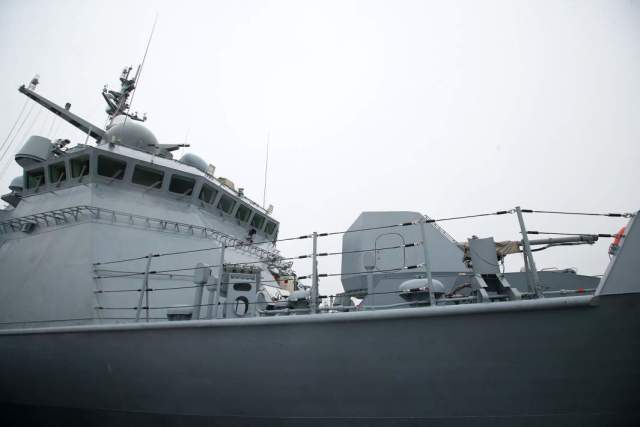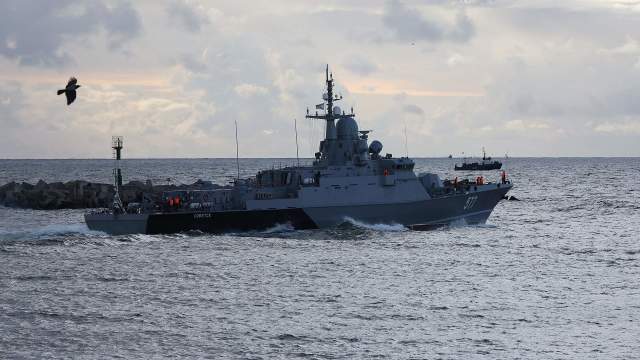The Ministry of Defense of the Russian Federation has studied the possibilities for the use of small missile ships in this water area
The military-technical response to the expansion of NATO is being prepared on Lake Ladoga. It can become a launch site for small rocket ships (MRCS). The Ministry of Defense has carried out comprehensive work to study the possibilities of basing ships and performing combat missions in this water area, sources told Izvestia in the military department. According to the results of studies that have been going on for several months, it is recognized that MRCS can operate effectively in Lake Ladoga. Experts note that this is an adequate measure after the expansion of NATO in the northwest: from here, ships can keep Finland at gunpoint.
Response to the threat from Scandinavia
The Russian Ministry of Defense conducted work on the study of the possibilities of basing and performing combat missions by small missile ships in Lake Ladoga this year, sources told Izvestia in the military department. As a result, the lake was recognized as suitable for the actions of the MRC project 22800 "Karakurt" and 21631 "Buyan-M". But so far the final decision on the permanent deployment of ships on Lake Ladoga has not been made.
According to the interlocutors of the publication, the research work took several months. Hydrographic information was studied, possible threats to small missile ships from a possible enemy were analyzed. The most important stage was the campaign of two small rocket ships of the project 22800 "Karakurt" from the Baltic Fleet. The MRC checked the routes and performed maneuvers.
— This is quite a sound military-technical response to the accession of Finland and Sweden to NATO, — military historian Dmitry Boltenkov told Izvestia. — Lake Ladoga is quite large. During the Great Patriotic War, the Ladoga Flotilla operated there, and various forces were deployed after the war. It is a good idea to provide shooting by "Brawlers" and "Karakurts" at NATO targets. In addition, this area is not as well known to Alliance intelligence as the Baltic bases. The Karakurts are effective platforms for deploying various types of weapons, and in the future they may receive hypersonic Zircon missiles. And we have a lot of reservoirs, rivers, channels in the northwest.

The ship of project 21631 "Buyan-M"
Image source: Photo: IZVESTIA/Alexander Polegenko
The potential deployment of the MRK in Lake Ladoga is especially relevant to Finland, which is located in this direction, believes military expert, Captain 1st rank Vasily Dandykin.
— The MRCS of the Buyan-M project belong to the river–sea class, — he explained to Izvestia. — But the "Karakurts" normally pass river systems. And Lake Ladoga is deeper than the Baltic Sea. At the same time, the armament of small missile ships has a significant range. At one time, the ships of the Caspian Flotilla fired at terrorist targets in Syria.
Earlier in October, the commander of the MRC "Sovetsk" project 22800 said that they were the first of the ships of the connection to master the new theater of navigation — Lake Ladoga. The crews of these ships passed the Neva River without tugs, despite the fact that the ships of the project 22800 "Karakurt" are less suitable for hiking on rivers than the MRC of the project 21360 "Buyan" — the latter are specially designed for movement on inland waterways.
The commander of the Sovetsk said that the sailors were based at the old Soviet base, which was closed in 2004: it was necessary to assess the capabilities of the Leningrad naval base in terms of providing ships. In addition, it was necessary to test how the hulls of ships would behave in fresh water.
The test results were considered successful. Now, if necessary, the MRCS of the Buyan-M and Karakurt projects can be relocated from the Baltic Sea to Lake Ladoga by rivers and launch missiles. From the lake — 40 km to the border with Finland. The flight range of the Kalibr cruise missiles armed with the Karakurts is over 1.5 thousand km. At the same time, in Lake Ladoga, Russian ships will be relatively safe from the Navies of NATO countries based in the Baltic.
Small, but powerful: "Karakurt" and "Buyan-M"
"Karakurty" should become the most massive project of attack ships for our fleet. To date, the Russian Navy has three representatives of the series — "Mytishchi", "Sovetsk" and "Odintsovo". They are part of the 6th Order of the Red Banner of Nakhimov I degree brigade of missile boats of the Baltic Fleet. In total, it is planned to build 18 similar ships. They are simultaneously produced at the shipyards of St. Petersburg, Zelenodolsk, Crimea and the Far East. It is assumed that by the mid-2020s, the Baltic, Black Sea and Pacific fleets will have their own compound of "Karakurts".

The small rocket ships of project 22800 are relatively small, their displacement is 870 tons. However, with their modest size, they carry a rather impressive arsenal. It includes a 3S14 firing system for eight Kalibr cruise missiles or supersonic anti-ship Onyx missiles, as well as a 76.2-mm AK-176MA artillery installation. Starting with the third ship of the series — Odintsovo, a naval version of the Pantsir-M missile and cannon complex is being installed on the Karakurty, which seriously increases the capabilities of combating air targets and anti-ship missiles.

Small rocket ship of project 22800
Image source: Photo: IZVESTIA/Alexander Kazakov
The contours of the ship and the use of radio-absorbing materials in the design make the Karakurts less noticeable to enemy radars than previous generations of MRCS. At the same time, they are equipped with modern radar stations and navigation equipment, as well as combat control, detection, targeting and communication complexes.
The MRK of the Buyan-M project are small ships with a displacement of 850 tons. Initially, they were designed to protect the maritime economic zone of Russia. However, then their functionality was revised. In October 2015, three MRCS of Project 21631 — Uglich, Grad Sviyazhsk and Veliky Ustyug — struck with Kalibr cruise missiles at terrorist targets in Syria. The launches were carried out from the Caspian Sea. In 2016, two other representatives of the series - "Green Dol" and "Serpukhov" — attacked extremists in Syria from the firing positions in the Eastern Mediterranean.
Today, ten representatives of the series are in service — three each on the Baltic Fleet and the Caspian Flotilla and four on the Black Sea.
Roman Kretsul
Alexey Ramm

